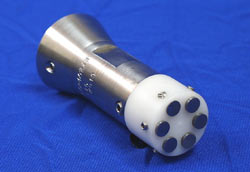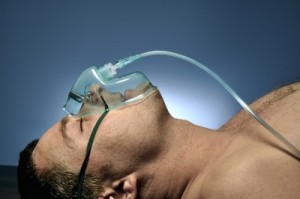Nasopharynx (NP) usually carries several types of bacteria, including pathogenic bacteria and avirulentnyy. NP colonization with potentially pathogenic bacteria begins in childhood and continues throughout childhood, and especially with the pneumococcus (Streptococcus pneumoniae), Haemophilus influenzae (usually nontypable), Moraxella catarrhal, and to cheap strattera a lesser extent Neisseria meningitidis and Staphylococcus aureus. (1-3) The state of emergency bacterial flora varies throughout life, depending on exposure, susceptibility of the host, age, geographic region, use of antibiotics, and crowding. "(1, 3-5) the interaction between bacterial flora also influence the types of bacteria that live in the state of emergency. (1.3), such as feedbacks in the probability cocolonization were found between pneumococci and Staphylococcus aureus and between N meningitidis and Streptococcus pneumoniae, H influenza, suggesting that these bacteria can interfere with each other. NP carriage of pneumococcus is of particular concern. Although NP pneumococcal carriage is usually asymptomatic, it can cause serious infections in children, including pneumonia, acute otitis media (START), meningitis and bacteremia. (2,6) Studies have shown that infection precedes Pneumococcal NP colonization pnevmokokkov with the same serotype as the disease-causing bacteria. In addition, NP pneumococcal carriage children a source of horizontal transmission of disease in society, especially among family members and in kindergartens. (4,7)

NP pneumococcal carriage is widespread in healthy children. To 81% of children aged < 3 years harbor at least one strain of pneumococcus. (8) Age is significantly associated with NP pneumococcal carriage. NP pneumococcal colonization rates peak during the first 3 years of life and decline thereafter. (1) Other factors that increase the risk of NP pneumococcal carriage include day care center attendance, previous antibiotic use, and crowding. (1,3,5,9)
7-valent pneumococcal conjugated vaccine (PCV7; Prevenar [R], Wyeth Pharmaceuticals Inc, Philadelphia, PA) recommended by the American Academy of Pediatrics Committee on Infectious Diseases for routine management in children at 3 dose-amplifier to be kids, with overtaking charts for children aged 24 to 59 months at high risk of invasive pneumococcal infections. PCV7 has demonstrated significant efficacy against invasive pneumococcal disease, pneumonia and acute otitis media. (11-15)
PCV7 and investigational 9-valent PCV has been shown to decrease the speed of NP carriage of pneumococcal serotypes vaccine (TC). (9,16,17) substitution effect is reported, with higher rates of NP carriage of nonvaccine serotypes that occur due to decreased rates of carriage of VTs. It should be noted that NP pneumococcal colonization VAC has been shown to be reduced in unvaccinated household members in homes where children were vaccinated with PCV7. (18) Moreover, PCV7 vaccination has been shown to reduce NP carriage of antibiotic-resistant strains Spneumoniae VT (8,9,19) effects of increased vaccination coverage for the prevalence of nonvaccine serotypes, resistance to antibiotics and environmental emergency bacterial flora require further monitoring. these studies presented as posters at the 27th annual meeting of the European Society of Pediatric Infectious Diseases (ESPID), held in Brussels, Belgium, 9-13 June 2009, provide updated information on the epidemiology of NP carriage of pneumococci and other bacterial flora and effects of PCV7 on NP pneumococcal carriage children (1). Bogart D, van Belkum, Sluijter M., et al Colonization by Streptococcus pneumoniae and Staphylococcus aureus in healthy children Lancet 2004; ..... 363:1871-1872 (2). Faden. H, L Duffy, Wasielewski R, Wolf J, D Krystofik, Tung Y. Relationship between nasopharyngeal colonization and development of otitis media in children J infect Dis 1997; .. 175:1440-1445 (3.) Bakir M, Yagci, Ulher N, Akbenlioglu C, Ilki, Soyletir G. asymptomatic carrier state Neisseria meningitidis and Neisseria lactamica in relation to Streptococcuspneumoniae and Haemophilus influenzae colonization in healthy children: With over 1400 samples of children Eur J Epidemiol 2001; 17:1015 - .. 1018 (4). Hussain M, Melegaro, Pebody RG and other longitudinal survey of households Streptocococus pneumonia nasopharyngeal carriage in the UK Epidemiol infect 2005 ..... 133:891-898 (5.) Rivera-Oliver .. IA, Bogart D, T Bell, and other pneumococcal carriage among children of indigenous people stand back in Venezuela: serotypes, susceptibility patterns and molecular epidemiology Clin infect Dis 2007; 45:1427-1434 (6). Gray BM, Converse GM .. III, Dillon HC Jr. Epidemiological studies pneumoniae in children. acquisition, transportation, and infection during the first 24 months of life J infect Dis 1980; 142:923-933 (7). Hivon-Bench N, Fraser .. D, N Porat, R. Dagan Distribution pneumoniae and antibiotic-resistant S. pneumonia after leaving the visitor center with their younger brothers and sisters J infect Dis 2002; .. 186:1608-1614 (8). Dagan R, Hivon. . Bench-N, O Zamir, Fraser D. Effect nonavalent conjugated vaccine on carriage of antibiotic-resistant pneumococcus in kindergartens Pediatr infect Dis J. 2003, 22:532-539 (9). Cohen R. .. Levy C, de la Roca F and other pneumococcal conjugated vaccine impact and reducing use of antibiotics in the nasopharynx carriage insensitive pneumococci in children with acute otitis media Pediatr infect Dis J. 2006; 25:1001-1007 (10 ....) American Academy of Pediatrics Committee on Infectious Diseases Mission Statement: Recommendations for the prevention of pneumococcal infections, including the use of pneumococcal conjugated vaccine (Prevnar), pneumococcal polysaccharide vaccine and antibiotic prophylaxis Pediatrics 2000 , 106:362 - .. 366 (11). Black S, Shinefield H, B Fireman, etc ... Northern California Kaiser Permanente Vaccine Study Center Group Effectiveness, safety and immunogenicity of pneumococcal vaccines in semyvalentnom children conlugate Pediatr infect Dis J. 2000:19:187 .. -195 (12). Black SB, Shinefield HR, Ling S, etc. The effectiveness of pneumococcal conjugated vaccine semyvalentnom in children younger than five years for prevention of pneumonia Pediatr infect Dis J. 2002;. 21:810-815. (13). Eskol J, T Kilpi, Palmu and others, the Finnish otitis media study group effectiveness OFA conjugated pneumococcal vaccine against acute otitis media N Engl J MM 2001 ... 344:403-409 (14.). O'Brien KL, Moulton LH, Reid R, et al Efficacy and safety of pneumococcal conjugated vaccine semyvalentnom in Indian children ... Group randomized trial Lancet 2003; 362:355-361 (15). O'Brien. . KL, David B., Chandran et al randomized controlled trial the effectiveness of pneumococcal conjugated vaccine against otitis media among Navajo and White Mountain Apache children Pediatr infect Dis J. 2008;. 27:71-73 (16). Cohen R. Levy C, E Bonnet, Lecuyer, Fritzell B. E. Varona as the introduction of pneumococcal 7-valent conjugated pneumococcal vaccine has changed the epidemiology nasopharyngeal carriage in France: 6-year observation in our catalog. 6th International Symposium on pneumococci and pneumococcal diseases (ISPPD), 8-12 June 2009, Reykjavik, Iceland (17). Dagan R, Hivon-Bench N, O Zamir and others decrease nasopharyngeal carriage of Streptococcus pneumoniae after administration. 9 -. . valent pneumococcal conjugated vaccine for children that attend kindergartens J infect Dis 2002; .. 185:927-936 (18). Millar EV, Watt JP, Bronsdon MA and other indirect effects 7-valent pneumococcal conjugated vaccine for pneumococcal. Colonization among unvaccinated family members Clin infect Dis 2008; .... 47:989-996 (19). Grivea B Panahiotu M, Tsantouli AG, Syrogiannopoulos GA Influence of conjugated pneumococcal vaccine hepravalent on nasopharyngeal carriage of penicillin-resistant pneumococcus among. kindergarten yet in central Greece Pediatr infect Dis J. 2008; ... 27:519-525





